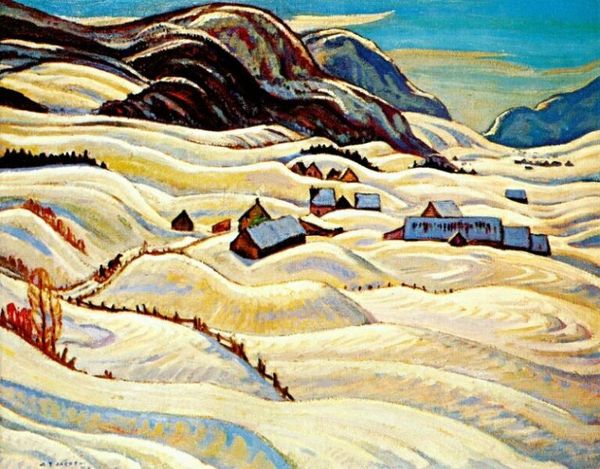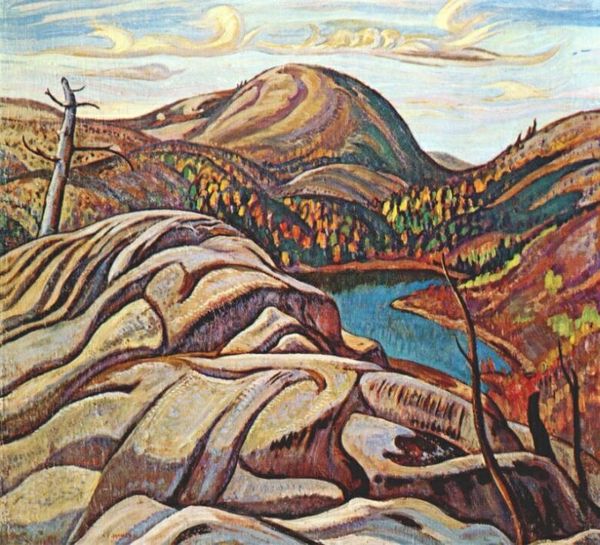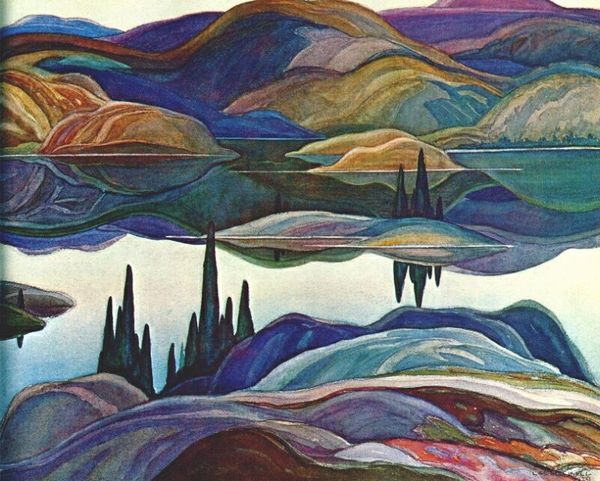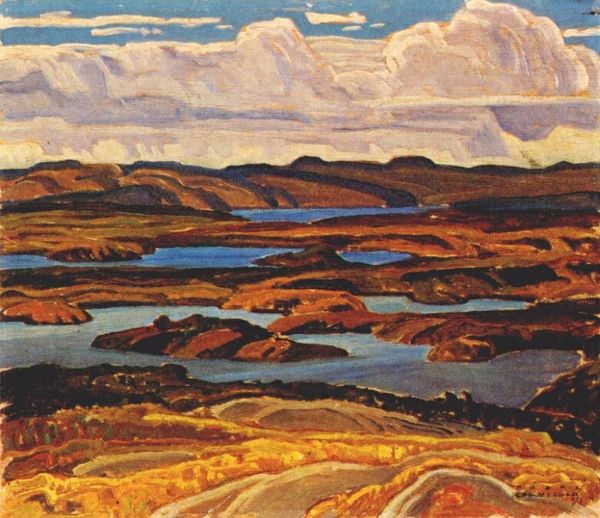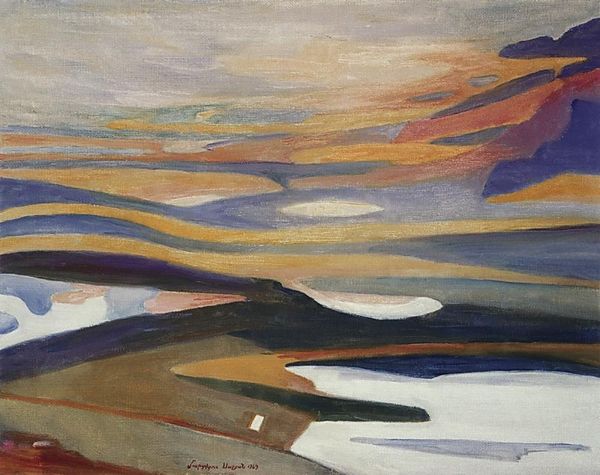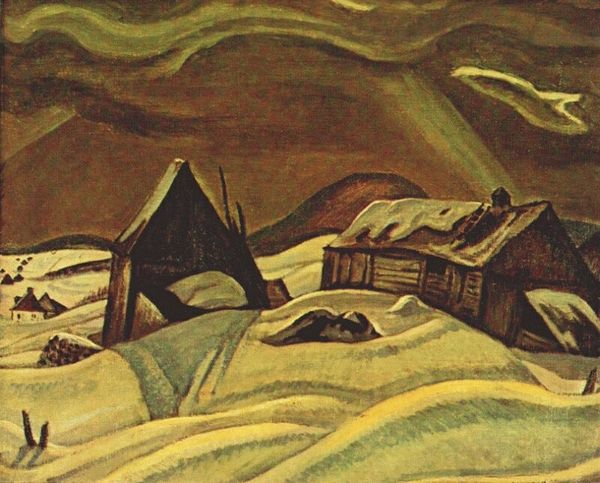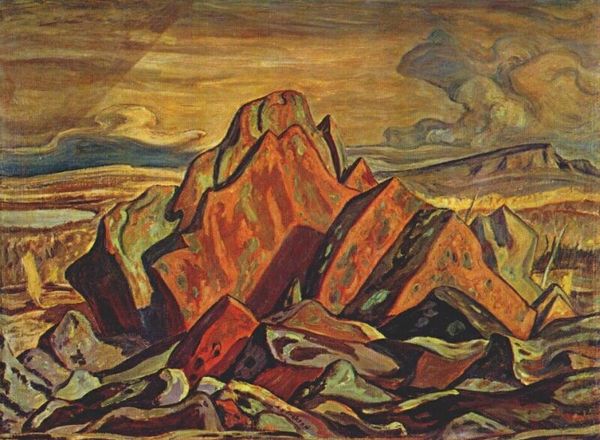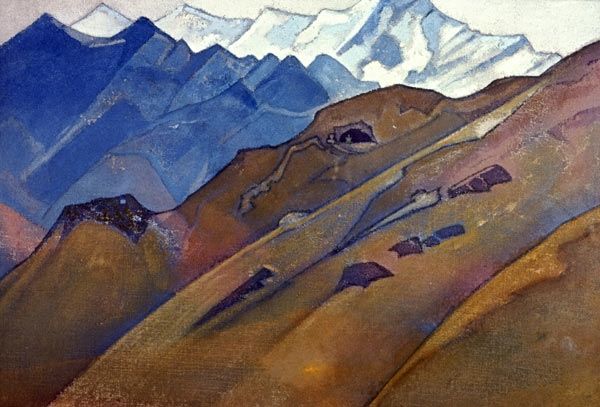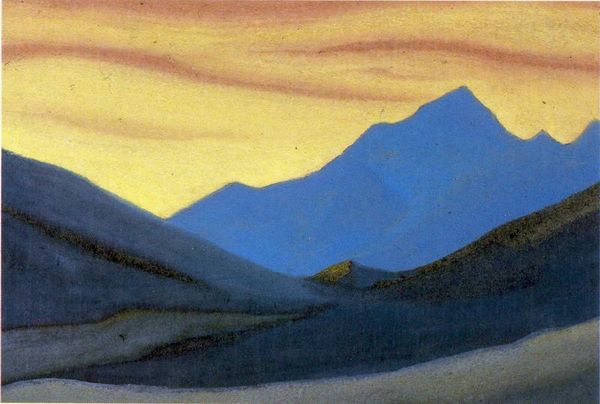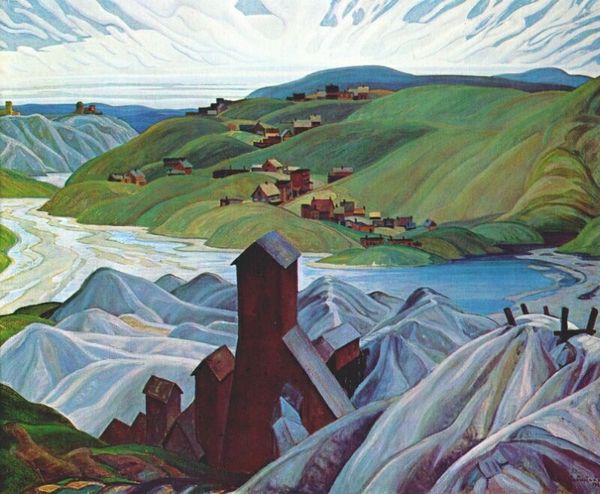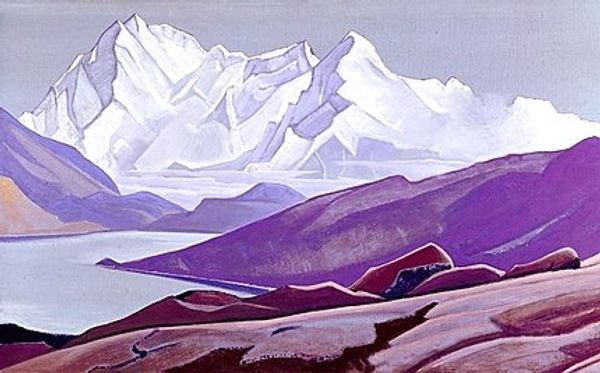
Copyright: A.Y. Jackson,Fair Use
Curator: This oil painting before us, created by A.Y. Jackson in 1933, is entitled "Winter Morning, Charlevoix County." What are your initial impressions? Editor: Immediately, I’m struck by how much the light insists itself upon this scene, bathing the snow in what seems like a sunset hue. It feels almost like a theatrical set, very consciously composed, doesn't it? Curator: It’s interesting that you note the light first. Jackson, while working within the Group of Seven and their vision of a distinct Canadian landscape, always acknowledged his roots in European Impressionism, and the Fauvist color palette adopted here creates a dramatic mood. However, I find that such formal analysis neglects to analyze the role landscapes play in the narrative of colonization of indigenous territories. Editor: That's a salient point. How does that perspective inform your view of this particular canvas? The barrenness of it certainly invites thoughts of harsh environments, perhaps reinforcing ideas of the North as empty land. Curator: Absolutely. Think about what isn't represented here – the absence of Indigenous presence, even though Jackson painted prolifically in Indigenous territories. That silence resonates with the historical erasure and cultural genocide that these communities endured through Canadian policies. Jackson’s gaze itself becomes a tool of power, shaping a particular vision that can reinforce dominant ideologies. Editor: So you're suggesting we need to question whose landscape this is and what narratives it subtly perpetuates. While ostensibly a scene of natural beauty, we should be more sensitive to whose stories and struggles are intentionally left unseen in favor of portraying romantic notions. Curator: Precisely. Jackson's choices in subject matter, style, and composition construct a certain version of reality. By being conscious of the politics of representation, we engage in more equitable conversations about art history and its lasting effects on Canadian national identity. Editor: Thanks for making me look at the artwork through such an intersectional lens. It has greatly enriched my understanding of it! Curator: You're welcome. I'm grateful for your interpretation. The constant interplay between historical context and contemporary theory is essential when we view and discuss these types of artwork.
Comments
No comments
Be the first to comment and join the conversation on the ultimate creative platform.
